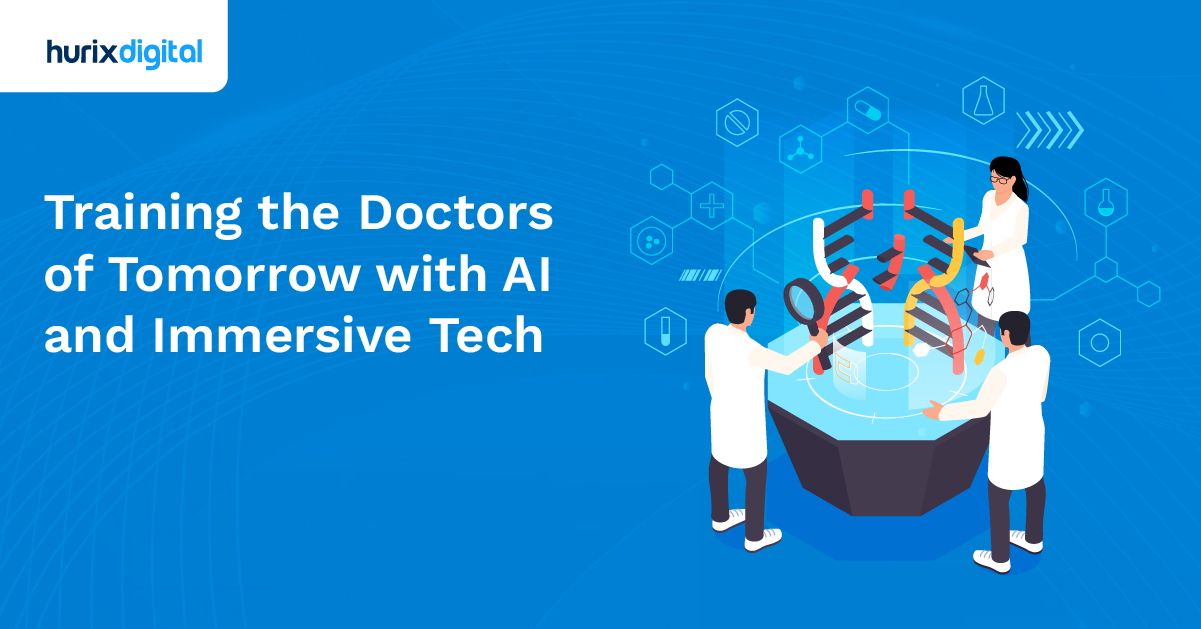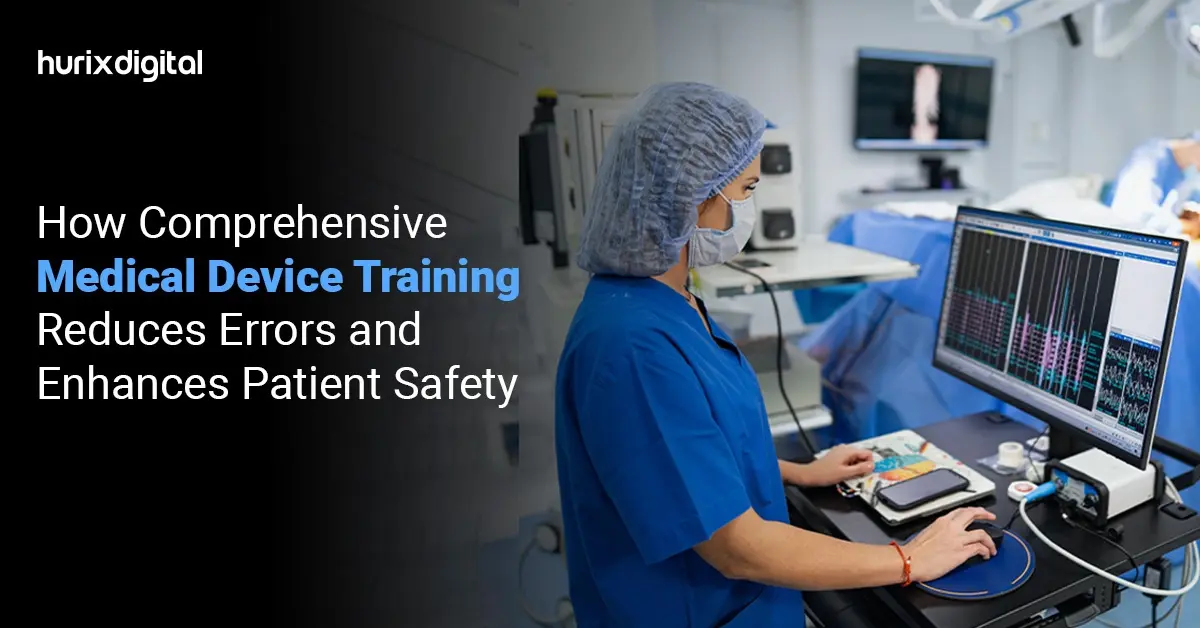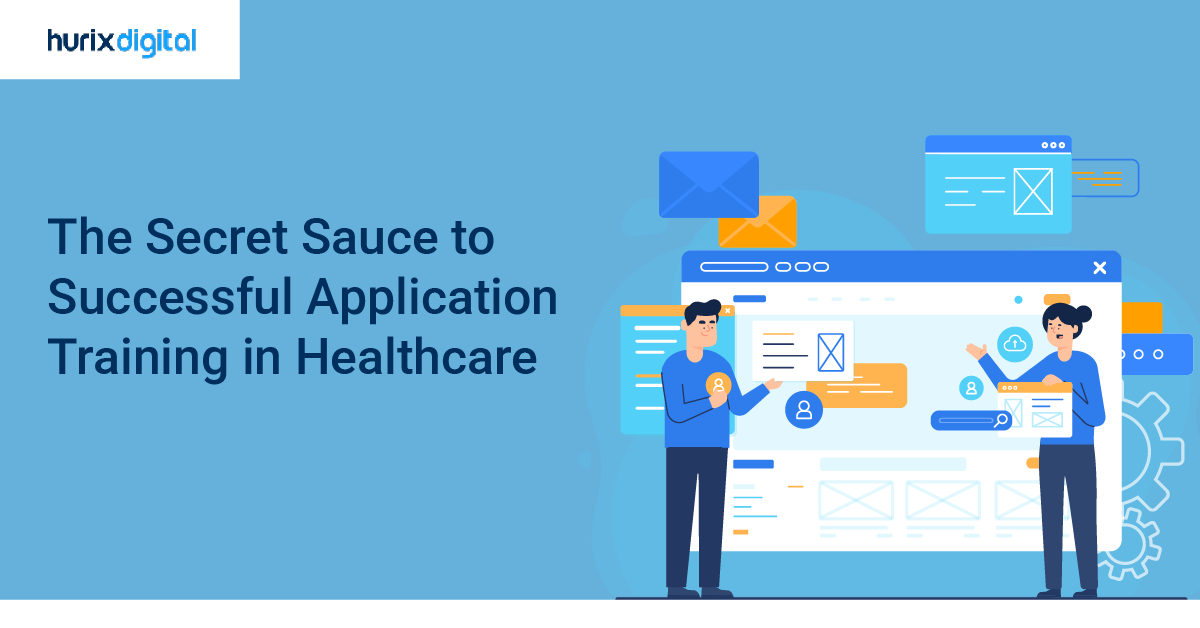
The Secret Sauce to Successful Application Training in Healthcare
Summarize with:
The efficient use of specialized applications, particularly in training content development for healthcare organizations, is vital for delivering high-quality patient care. It is not merely an advantage but a necessity. Effective application development training ensures that healthcare professionals can navigate and utilize critical software and tools.
Designing a training program tailored to the unique needs of healthcare professionals can significantly enhance their ability to provide top-notch patient care.
This blog will delve into the critical aspects of application training, emphasizing its pivotal role in healthcare workforce learning, and provide a comprehensive guide on best practices for a successful program.
Table of Contents:
- What is Application Training?
- Why is Application Development Training so important in Healthcare Workforce Learning?
- Best Practices for an Effective Application Development Training Program in Healthcare Organizations
- Customization for Roles and Specialities
- Hands-On Training and Simulations
- Role-Based Training Tracks
- Continuous Learning Strategies
- Feedback Mechanism
- Assessment and Certification
- Integration with Workflow
- Prioritize Compliance and Security Training
- Provide Accessible Learning Resources
- Feedback and Evaluation Loop
- How to Design Effective Application Development Training Programs for Healthcare Professionals?
- Medical Assistant Training: A Case Study
- Train Healthcare: Fostering a Culture of Excellence
- Conclusion
What is Application Training?
Application Training is a targeted educational program aimed at equipping healthcare professionals with the knowledge and skills required to proficiently use specialized software and tools relevant to their roles, particularly within the context of training and development in healthcare organizations. It encompasses hands-on training, simulations, and practical exercises, ensuring that professionals are adept at navigating and utilizing critical applications in their day-to-day tasks.
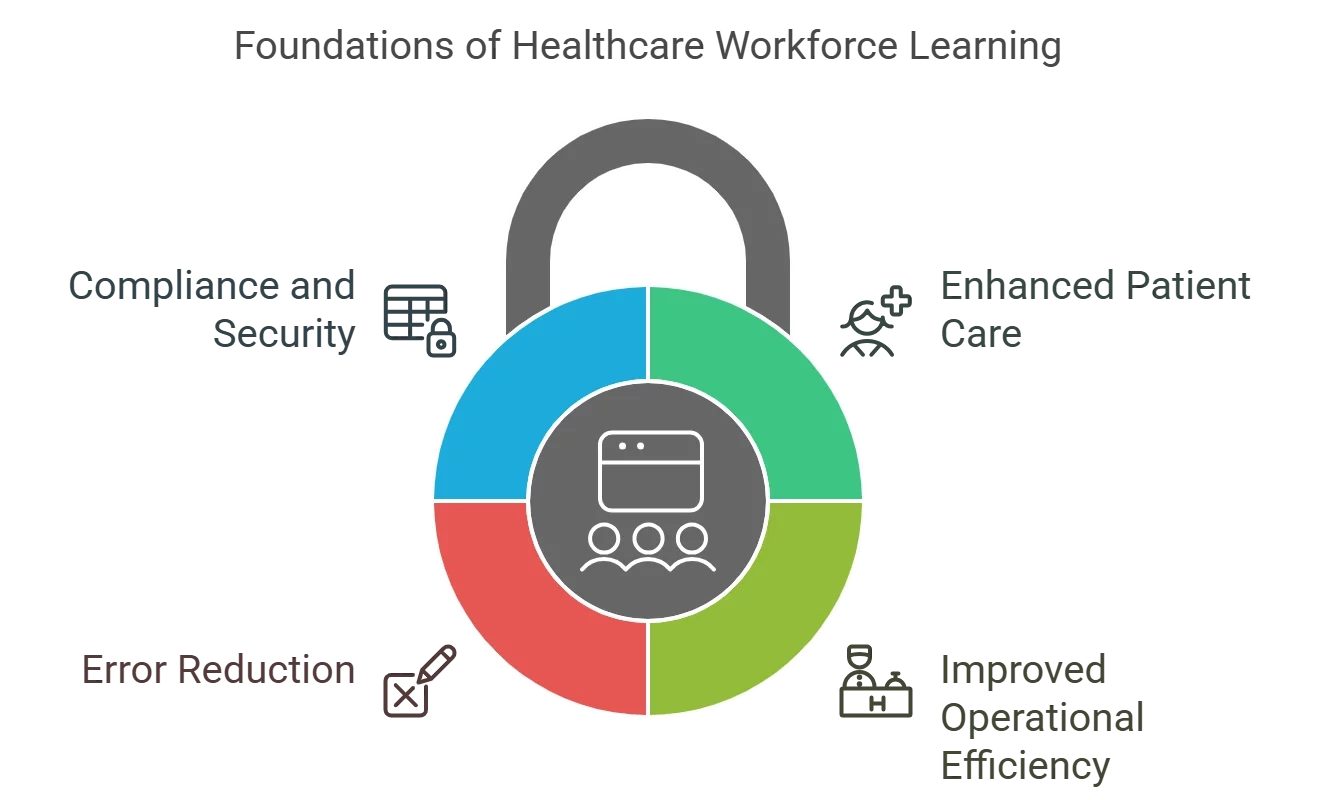
Why is Application Development Training so important in Healthcare Workforce Learning?
The demand for proficient use of technology in healthcare has never been more pronounced. Therefore, healthcare employee training has to evolve with the fast-evolving nature of healthcare applications, which necessitates ongoing best practices Training for Healthcare Professionals. Here’s why it holds paramount importance:
1. Enhanced Patient Care
Professionals adept in using specialized applications can provide more efficient and accurate patient care. For instance, a nurse proficient in utilizing Electronic Health Records (EHR) systems can access patient information swiftly, ensuring timely and precise care.
2. Improved Operational Efficiency
Well-crafted Employee Training Programs focused on application usage translate to increased productivity. When skilled in using software, healthcare professionals can perform tasks more efficiently, saving valuable time and resources.
3. Error Reduction
In healthcare, precision is paramount. Application development training significantly reduces the likelihood of errors that can arise from unfamiliarity or misuse of critical software. For example, a radiologist well-versed in medical imaging software is less likely to misinterpret results.
4. Compliance and Security
Handling sensitive patient information requires strict adherence to privacy regulations. Application development training ensures that professionals understand and implement best practices for safeguarding patient data, thereby maintaining compliance with legal and ethical standards.
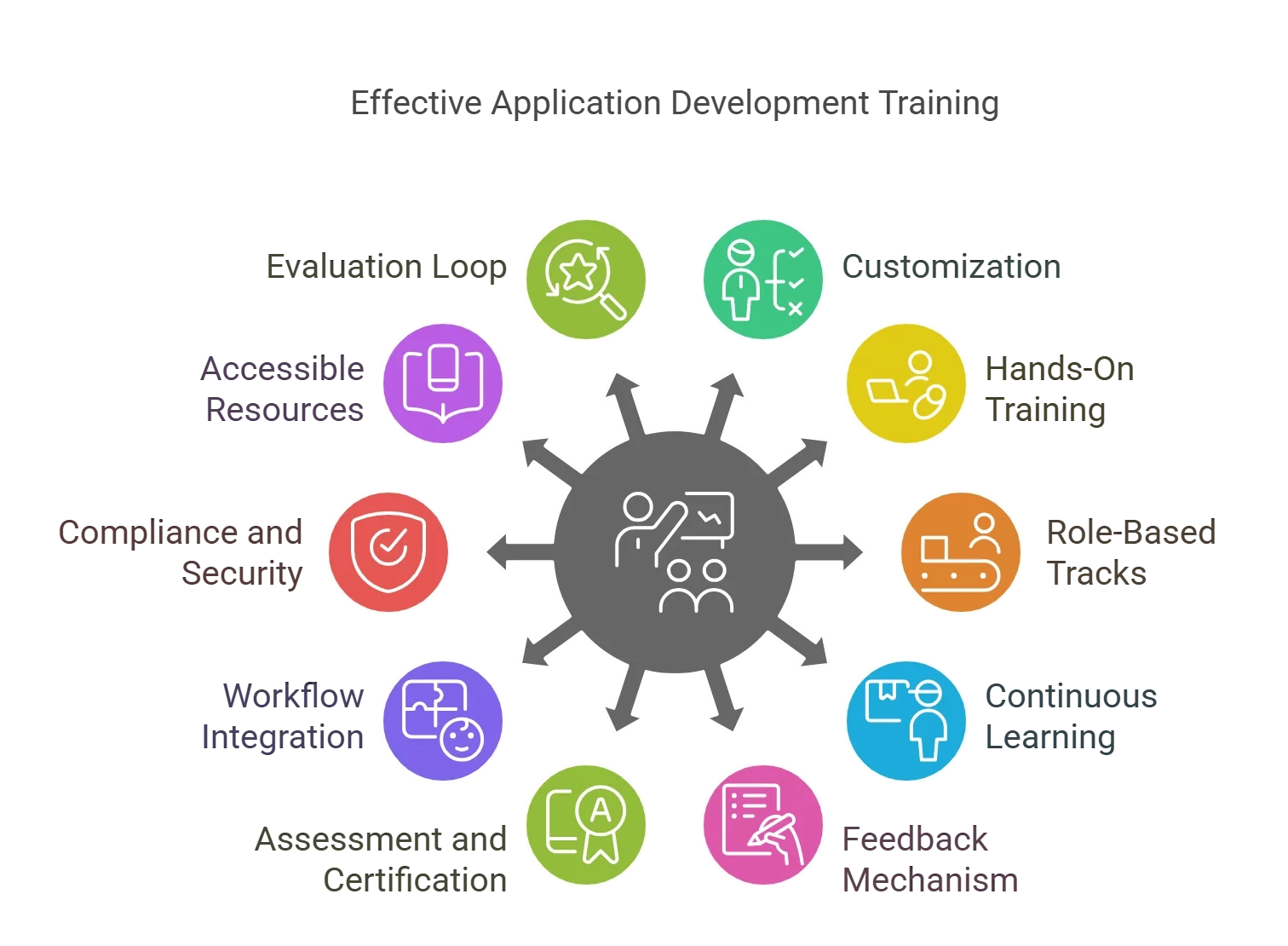
Best Practices for an Effective Application Development Training Program in Healthcare Organizations
Let’s now check out some of the industry-tried best practices to make an effective application development training program for healthcare organizations:
1. Customization for Roles and Specialities
Tailor the training content to address the specific applications relevant to each role. Whether EHR systems for nurses or medical imaging software for radiologists, customization ensures that professionals receive training that directly applies to their daily tasks. Tailor the training content to suit the specific roles and specialties within the healthcare organization. For instance, a medical billing specialist may require in-depth training in billing software, while a nurse might focus on patient management systems. This customization ensures that professionals receive training relevant to their responsibilities.
Example: In a large hospital, different departments, such as radiology, billing, and nursing, may use distinct applications. By customizing training content, each department can focus on the applications most pertinent to its tasks.
2. Hands-On Training and Simulations
Provide ample opportunities for hands-on training and simulations. Practical exercises allow healthcare professionals to engage with the applications in a controlled environment actively. This hands-on experience builds confidence and proficiency, preparing them for real-world scenarios.
Example: In a simulation, a nurse can practice using an Electronic Health Records (EHR) system to update patient records, ensuring accuracy and efficiency in real patient interactions.
3. Role-Based Training Tracks
Recognize that different roles within a healthcare organization may require varying levels of proficiency with different applications. Create role-specific training tracks that address the unique requirements of each position. This ensures that professionals receive training that aligns with their responsibilities.
Example: A radiologist may need intensive training in medical imaging software to interpret and analyze images accurately, while a medical receptionist may focus on appointment scheduling applications.
4. Continuous Learning Strategies
Healthcare technology is dynamic, with frequent updates and advancements. Incorporate a strategy for continuous learning and updates into the training program. Provide access to resources, webinars, and knowledge-sharing sessions to keep professionals abreast of the latest features and best practices.
Example: A quarterly webinar series on the latest updates in Electronic Medical Record (EMR) systems ensures that healthcare professionals are well-informed and proficient in utilizing the system’s full capabilities.
5. Feedback Mechanism
Encourage trainees to provide feedback on the training program. This feedback is invaluable in identifying areas that may require additional focus or improvement. It also helps refine the training content to better suit the needs of healthcare professionals.
Example: After a training session on a new prescription management application, nurses can provide feedback on any challenges they face in navigating the system. This input can be used to improve future training sessions.
6. Assessment and Certification
Regular assessments validate the proficiency of healthcare professionals in using applications and serve as a motivator for continuous learning. Consider implementing certification programs that recognize and reward professionals for their expertise. This formal recognition can boost their morale and further encourage ongoing skill development.
Example: A certification program for an advanced telemedicine platform can signify that a healthcare professional is proficient in providing virtual consultations, enhancing their credibility in the field.
7. Integration with Workflow
Ensure that the training program aligns seamlessly with the workflow of healthcare professionals. This integration minimizes disruption and allows professionals to apply what they’ve learned to their daily tasks directly. For instance, if the training involves EHR systems, incorporate scenarios that mirror real patient interactions.
Example: If training involves using a Point of Care (POC) device, incorporate scenarios that mirror real patient interactions, allowing professionals to practice using the device in a clinical setting.
8. Prioritize Compliance and Security Training
Given the sensitive nature of healthcare data, it’s imperative to include training on compliance and security measures. Professionals should be well-versed in the legal and ethical considerations surrounding patient information. This helps safeguard patient privacy and maintain regulatory compliance.
Example: A module on compliance with the Health Insurance Portability and Accountability Act (HIPAA) ensures that professionals understand the legal requirements for protecting patient information.
9. Provide Accessible Learning Resources
Offer easy access to learning resources such as user manuals, video tutorials, and a knowledge base. Having readily available resources empowers professionals to refresh their knowledge or troubleshoot issues independently, enhancing their overall proficiency with the applications.
Example: A comprehensive knowledge base provides quick answers to common questions about using medical billing software, allowing professionals to find solutions on their own.
10. Feedback and Evaluation Loop
After the initial training, a feedback and evaluation loop will be established to evaluate training effectiveness. Gather input from healthcare professionals on their experience with the training. Use this feedback to make necessary adjustments and improvements for future training initiatives.
Example: A post-training survey can gauge how well healthcare professionals feel equipped to use a new EHR system and identify areas where additional support or training may be needed.
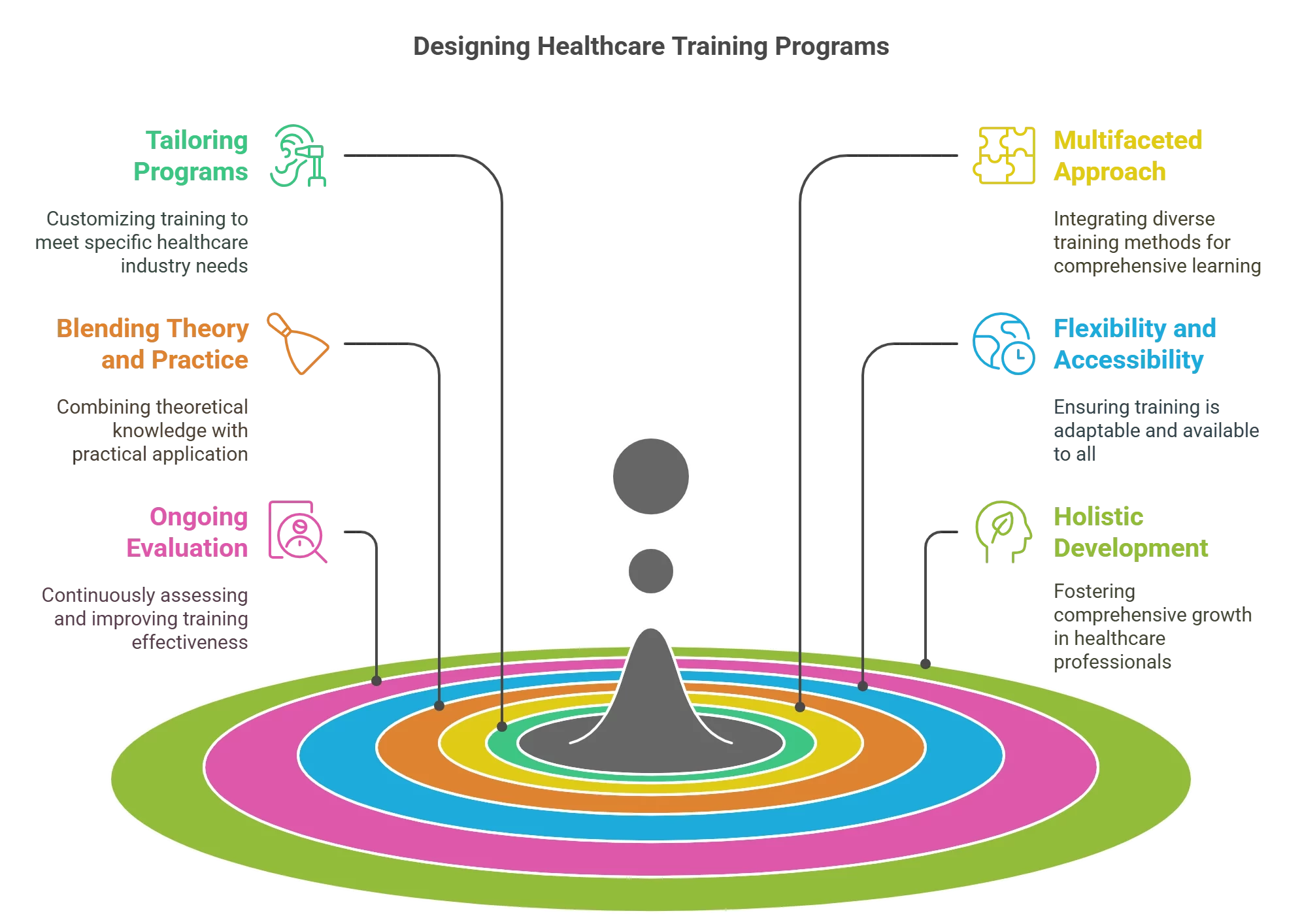
How to Design Effective Application Development Training Programs for Healthcare Professionals?
Staying abreast of the latest technologies and best practices in the rapidly evolving healthcare landscape is paramount. This underscores the importance of training in healthcare. A well-structured application development training program not only equips healthcare professionals with the necessary skills but also fosters a culture of continuous learning and improvement.
When it comes to Training for Healthcare Professionals, especially in the context of specialized applications, careful planning and execution are key. Here are some vital considerations:
1. Tailoring Programs to Industry Needs
The first step in designing an effective training program is understanding the specific needs and challenges faced by healthcare professionals. Whether it’s adapting to new technologies, mastering updated protocols, or enhancing patient communication, a customized training program ensures that skills are relevant and directly applicable.
2. A Multifaceted Approach to Training for Healthcare Professionals
A one-size-fits-all approach seldom works in the healthcare sector. Different professionals have distinct roles and responsibilities, each requiring a tailored training regimen. For instance, a medical assistant training program would differ significantly from that of a radiologist or a nurse. Specialized training modules should address the unique demands of each role.
3. Blending Theory with Practice
An effective training program doesn’t just disseminate theoretical knowledge; it emphasizes practical application. Simulations, case studies, and hands-on experiences should be integral components of any healthcare training program. This ensures that professionals not only understand concepts but also know how to apply them in real-world scenarios.
4. Flexibility and Accessibility
The demands of healthcare professionals are dynamic and demanding. Designing a training program that offers flexibility in terms of scheduling and accessibility is crucial. Leveraging technology, such as e-learning platforms or mobile applications, allows professionals to engage with the training material at their own pace and convenience.
5. Ongoing Evaluation and Feedback
A successful application development training program is not a one-time event but an ongoing process. Regular evaluation of the program’s effectiveness is imperative. This can be done through assessments, surveys, and participant feedback sessions. Analyzing the results allows adjustments and improvements to be made, ensuring that the training remains relevant and impactful.
6. Holistic Development
Beyond technical skills, healthcare professionals must also be equipped with soft skills like communication, empathy, and teamwork. An employee training plan should encompass these aspects, recognizing that a holistic approach to development leads to more well-rounded and effective professionals.
Medical Assistant Training: A Case Study
Consider the example of medical assistant training. This role necessitates a unique blend of administrative skills, clinical knowledge, and patient interaction. A tailored program would encompass areas like medical terminology, electronic health records management, and patient education techniques. Practical exercises in a simulated clinical setting would further reinforce these skills.
Train Healthcare: Fostering a Culture of Excellence
Ultimately, a well-designed training program is about individual development and creating a culture of excellence within the healthcare organization. When professionals are empowered with the right knowledge and skills, they are more confident, competent, and committed to providing the highest quality of care.
Use case:
One notable example of effective Application development training is the implementation of Medical Assistant Training programs. These programs often include modules that use Electronic Health Records (EHR) systems, medical billing software, and appointment scheduling applications. Through hands-on training and practical exercises, medical assistants become proficient in efficiently managing patient information and administrative tasks.
By conducting thorough needs assessments, providing hands-on practice, and offering ongoing support, organizations can empower their staff to leverage technology for enhanced patient outcomes. With well-designed application training programs, healthcare professionals can confidently navigate and utilize applications to deliver the highest standard of care.
Conclusion
The importance of healthcare training, especially Application Training, cannot be overstated. It empowers healthcare professionals to deliver superior patient care, enhance productivity, and ensure compliance with regulatory standards. When designing these programs, it’s imperative to customize the content, provide hands-on experience, emphasize continuous learning, seek feedback, and implement assessment mechanisms.
By tailoring programs to industry needs, emphasizing practical application, and fostering a culture of excellence, healthcare organizations can ensure that their professionals are equipped to deliver the highest standard of care.
For comprehensive and tailored solutions in healthcare training, consider partnering with Hurix Digital, a leading provider of innovative learning solutions. Connect with us to tap into our expertise in creating engaging and effective application development training programs that significantly improve the proficiency of healthcare professionals in using critical applications.
Summarize with:

Senior Vice President
Julia brings over 20 years of global experience in digital learning and business strategy. She specializes in client success, enterprise learning solutions, and driving growth through innovation, with a focus on AI, VR, and emerging technologies across diverse industry verticals.
 Upcoming Masterclass | Build an Army of Brand Evangelists using Training & Development | November 20th, 8:30 AM PDT | 11:30 AM EDT | 10:00 PM IST
Upcoming Masterclass | Build an Army of Brand Evangelists using Training & Development | November 20th, 8:30 AM PDT | 11:30 AM EDT | 10:00 PM IST

